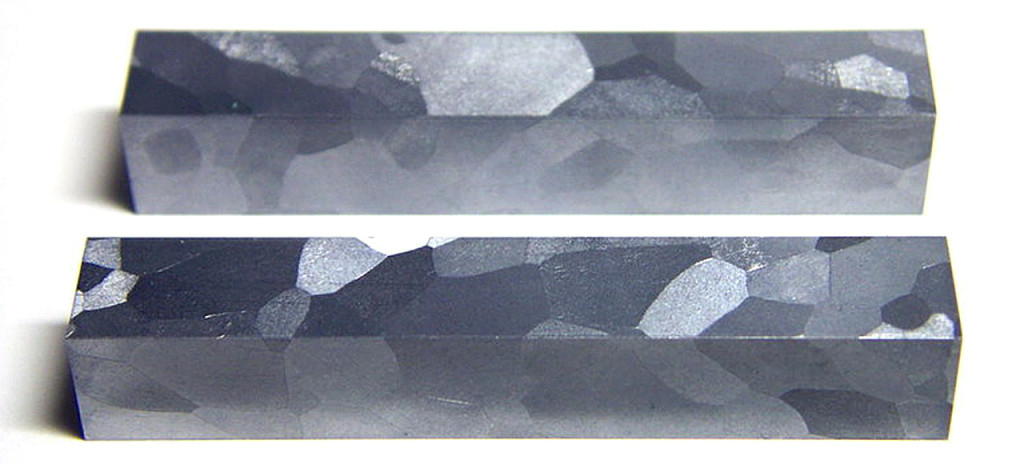RECOIL OFFGRID Preparation Knife Steel Comparison Guide
You’ve probably realized it by now: we’re pretty passionate about knives. It’s bordering on all-out obsession. In our defense, a good knife is extremely important to any survivalist, no matter the environment. Your knife is your shelter construction tool, your kindling-gathering implement, your cooking utensil, and even your self-defense weapon.
Choosing a good knife matters, and that’s why we talk about it as often as we do.
So, how do you choose the right knife? Well, there are a lot of factors to consider, like size, shape, weight, folding or fixed blade, additional features, and cost. However, there’s one factor that might just top all the others: the steel. After all, a knife is essentially just a sharpened hunk of steel with a handle, so its molecular composition changes everything.

Vanadium (seen here in pure form) is added to many premium steels to improve wear resistance. Photo: Wikipedia

Trust us, analyzing knife steel is a deep rabbit hole. If you read enough about the metallurgy process, you’ll feel like you need a degree in Materials Engineering to understand it all. Fortunately for us, there are some tools online that make knife steel comparison much easier.
For a good overall introduction, we’d suggest you read the Essential Guide to Knife Steel from Knife Informer. It covers the five key properties of knives:
The guide also covers the differences between tool steel, carbon steel, and stainless. Then, it gives brief introductions to some of the most common knife steels, and their strengths and weaknesses.
Keep in mind that the guide’s “Ultra Premium”, “Mid-Range”, and “Low-End” labels are a subjective touch. It refers to 1095 carbon steel as “Lower Mid-Range”, but also mentions that its extreme toughness and ease of sharpening makes it one of the best choices for a fixed-blade survival knife. So, don’t rule out a knife based on that metric.
For a more in-depth look at knife steel composition, check out Knife Informer’s excellent Knife Steel Composition Chart. It breaks down the elemental composition used in each type of steel, for those who want to dive deeper into the technical side.
No matter what steel you choose, do your research beforehand. Otherwise, you might end up with an expensive, dull paperweight.
Special thanks to reader Sean H. for the tip about the Steel Composition Chart.
 STAY SAFE: Download a Free copy of the OFFGRID Outbreak Issue
STAY SAFE: Download a Free copy of the OFFGRID Outbreak Issue
No Comments